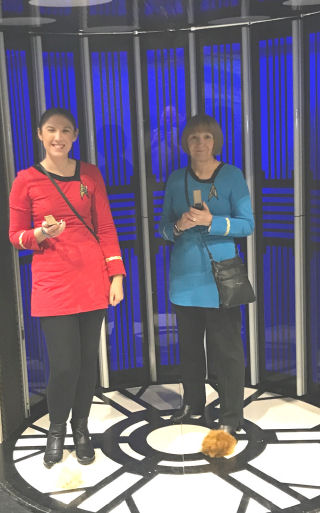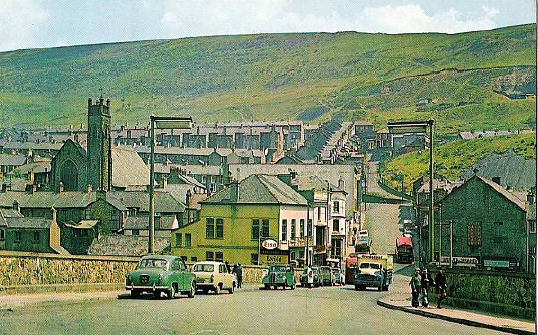Dates for your Diary
Saturday 26th January 2019 – Coffee Morning on the ‘Winter of ‘47’.
December 100 Club
No. 67 Sharon Saunders £20
No. 3 Colin Price £10
If you would like to join our 100 club and be in with a chance of winning, it costs just £1 a month. Ask at the museum for further details.
Annual Membership
Annual membership fees of £6 for standard membership and £25 for Vice Presidents are now due so please call at the museum to pay or send in
a cheque made payable to Abertillery & District Museum Society and post to ADMS, Market Street, Abertillery, Gwent NP13 1AH. By renewing your membership you will be helping with the museum’s running costs and in return you will receive this monthly newsletter. May I take this opportunity to thank all our members, Vice Presidents and volunteers for their support
throughout 2018 and for their continued support in the year ahead.
Gift Aid
Are you able to ‘gift aid’ your membership donation? As a registered charity, we have recently applied to HMRC to be able to claim gift aid on your donations. If you are a UK tax payer we can claim 25% extra on your membership fee
at no extra cost to you. All you have to do is call at the museum and sign a gift aid declaration form and leave the rest to us!
 Coffee Morning
Coffee Morning
We had a very festive coffee morning in December with a visit from Santa and the playing of
Christmas carols which were performed by Abertillery Grammar/Nantyglo Comprehensive pupils in the 1970s. The musical arrangements were the work of talented musician and museum supporter, Mr Martin Budd.
War Evacuees - Part one
In 1939, at the start of World War Two, many school children were evacuated from the big
cities to Wales in order to avoid the bombing,
and many ended up in Abertillery (I know one girl was billeted with my mother (Betty Evans, later Betty Wayne) and her parents in Evelyn
Street though alas, I don’t know any details). In 2007 the following letter was received from a Mrs Sheila Williams (nee Manwaring) giving a detailed account of her life in Abertillery as a war evacuee….
Dear Mr Bearcroft, 16th August 2007
Last week while I was staying with my niece in Bristol, she took me for a trip into Wales. It was really a trip down ‘Memory Lane’, for my sister and I had been evacuated to Abertillery during the last war. I wondered if you would be interested in my recollections of that time over 60 years ago.
When war broke our in September 1939 it was important to move children out of the cities to where they would be safer from the bombing. Our school was sent first to Deal and then Folkestone on the Kent coast. With the fall of
France we were hastily moved to Abertillery, arriving about 7pm after a very long train ride. It was raining of course! We had never seen
mountains before and we were tired and hungry and some were a little tearful.
We were taken along to a big chapel in the town and allocated to our new homes. As you can imagine it took quite a long time to get us all settled in, but eventually, in ones and twos we were found billets with kind people who opened their doors and hearts to us.
We had come from a large grammar school in South East London, Eltham Hill School. There were two classes for each school year. You started at eleven years of age and left at sixteen, at least five years education so you can see what a large number of girls descended on Abertillery! I don’t think every child came with us; quite a number stayed in London and took
their chance and were taken in by other schools who didn’t evacuate.
It wasn’t’ long before arrangements were made for us to continue our education. A large co-ed grammar school at the top of Oak Street offered
to share their accommodation with us. The two schools worked independently, for we each had our own teachers and curriculum. As far as I can remember we had the use of the school on two whole days and Saturday mornings. The other days we had classes at a large chapel to
the north of the town. I think we used to walk up Tillery Street or maybe Alma Street. There were two large classrooms there and we had singing
lessons in the chapel itself sitting high up in the choir stalls.
We also had the use of rooms over the Co-Op shop in Church Street. One large room was our art studio, well equipped with all manner of painting materials and easels. The other room was a library. Quite a lot of time was spent scurrying about from one part of the town to another with our bags of books etc. for the next lesson. We went swimming in the baths in town.
During the winter it was boarded over and was used as a place for PE. We had just a few items for gymnastics, a vaulting horse, box and spring
boards. Once a week we had a games lesson on the sports ground on the west side of the railway. We played tennis on the courts and practised our passing skills for lacrosse (which was our school game). We didn’t use the openair swimming pool with the school but we did in our own free time if it was warm enough. Netball was played at the school in Oak Street. I can’t remember there being any into-school activities such as league matches and combined choir concerts but as teenagers one is very selfabsorbed.
I expect our teachers had more than enough to do with teaching us and keeping us happy and occupied outside the normal school hours. The responsibility must have been awesome for them.
To be continued…! Read the rest of this letter in next month’s edition.
Sally Murphy
Promotional Videos
In our August newsletter edition was a article about some promotional videos made by locally raised Ben Jones who now works in London as a programme maker. The videos are ready and have been for some time. The reason they have not yet been posted is that the museum is setting up a ‘just giving’ page which has involved applying to HMRC for gift aid status. Apologies for the delay and please bear with us, it will be worth the wait!
STAR TREK
My family and I recently ‘boldly went where many have gone before…’ to our second Star Trek convention! Trekkies or Trekkers as we like to call ourselves converge in our hundreds on such events proudly wearing our Starfleet uniforms! While we go to these events to get a chance to see and chat to the actors from the shows, it is worth going just to meet other fans
and see the many array of elaborate costumes that they don. Some even come as characters from other franchises – we met a David Tennant look-alike dressed, of course, as Dr Who and
another came as a character from, dare I say it, Star Wars (Trekkies absolutely hate Star Trek being confused with Star Wars).
Star Trek has been on our screens for more than 50 years but why is it so popular? The programme, which started life in the mid 1960s, was the brainchild of Gene Roddenberry who had a very optimistic view of mankind’s future. He is quoted as saying that centuries from now‘…there will be no hunger or greed and every child will be able to read’
The crew of Star Trek ‘The Original Series’ as it is now known, included a Scott, a Japanese, a Russian, an alien and even a black female, which made it outrageous given that it was not long since Japan and America had been at war; a cold war still existed with Russia and to have a female, never mind a black female on the ship’s bridge was unheard of! (Originally
Roddenberry planned to have a female as second-in-command but was overruled by the TV Producers). It ran for three seasons and did not initially do well in the ratings. It was only during re-runs that it increased in popularity but it would still be 13 years before the first film would be made. Then, after a number of films, a new Star Trek series ‘The Next Generation’ hit our screens followed by Deep Space 9, Voyager, Enterprise (a prequel) and very recently Discovery, not to mention the many other films in between. Further new series are also rumoured to be afoot.
Unlike some science fiction writers, Roddenberry avoided the pitfall of time catching up with events by starting the story hundreds of years in the future, (classic example Space 1999 where we have a base on the moon and yet 20 years past that date and it has yet to happen), and although no year was mentioned at all in those early episodes, we have since been told the story was set around 2250.
Many episodes had underlying moral stories and dealt with difficult issues. Indeed four episodes of the original series were not even shown on TV in Britain at the time as they were considered too controversial. They eventually became available to buy on video cassette tape in the 1980s and I was eager to watch them to see what the fuss was all about. One of these episodes had been withheld from broadcast because it featured the first inter-racial kiss between a white American (Kirk played by William Shatner) and an afro-American (Uhura
played by Nichelle Nichols) though it would be many more years before I appreciated the
significance of this.
 ‘Believability’ was also extremely important to Gene Roddenberry, so a great deal of thought went into Star Trek ‘tech’. Many things we saw on Star Trek in the 1960s are now a reality and some we have even surpassed such as the‘floppy disk’ which was used extensively in the 1990s by computer users and which has now been replaced with the USB Memory Stick. And remember the flip-up mobile phone? It’s design has now been superseded but it’s resemblance to the original Star Trek communicator is uncanny. The digital pad we sign when a parcel is delivered to our door was also first seen on Star Trek back in the 1960s as was an ‘e-reader’. The ‘hypospray’ used by the ship’s doctor which allows medication to be injected into the skin without the use of needles has now been in use by our military for a number of years.
‘Believability’ was also extremely important to Gene Roddenberry, so a great deal of thought went into Star Trek ‘tech’. Many things we saw on Star Trek in the 1960s are now a reality and some we have even surpassed such as the‘floppy disk’ which was used extensively in the 1990s by computer users and which has now been replaced with the USB Memory Stick. And remember the flip-up mobile phone? It’s design has now been superseded but it’s resemblance to the original Star Trek communicator is uncanny. The digital pad we sign when a parcel is delivered to our door was also first seen on Star Trek back in the 1960s as was an ‘e-reader’. The ‘hypospray’ used by the ship’s doctor which allows medication to be injected into the skin without the use of needles has now been in use by our military for a number of years.
From sliding automatic doors to tablet computers to video conferencing (Skype and Facetime etc) to voice recognition software, all were first seen on Star Trek in the 1960s. It was indeed a look into the future in terms of technology if nothing else. Live Long and Prosper!
Sally Murphy
What’s the Foundry Bridge?
That’s not a question anyone in Abertillery would ask. A local resident recently donated to the museum a colour photograph of the latest Foundry Bridge being constructed and that led me to look on-line at the history of the earlier bridges. There have been three Foundry Bridges.
As Abertillery rapidly industrialised and grew in the latter part of the nineteenth century the need for a safe crossing over the railway which ran down from Cwmtillery became ever more pressing. In 1889 the Local Board obtained an estimate of £135 6s 8d for a cart bridge or footbridge over the railway but the scheme was not pursued at the time, seemingly due partly to inertia and partly to legal problems of land ownership. New tenders were subsequently submitted for the work which eventually started in March 1896 although construction work was frustratingly slow and it was not until August 1898 that the bridge was open to pedestrians. The bridge was later opened to vehicular traffic but by 1931 the powers
that be decided that a new Foundry Bridge was required.
It was not until 1937 that a scheme for a completely new Foundry Bridge was agreed but the following year that plan was shelved as being too costly at £27,000 - £30,000. A new bridge was eventually built, in the same place as the old one, at a cost of £41,000. The contractors were Robert
McAlpine & Sons and it was a sufficiently significant piece of civil engineering as to be opened in summer 1951 by the then Minister of Transport, Alfred Barnes M.P. The Foundry Bridge at Abertillery was the first pre-stressed concrete bridge in Britain.
In 2007-8 another new Foundry Bridge was built, again in the same place as its predecessor and it is the construction of this bridge that the recently donated photograph shows. More recently, a Gateway project saw the enhancement of the bridge including the erection of six steel spires which represent the historic locations of former local collieries. The base of each spire bears the name and operational dates of each of the collieries, as follows, Cwmtillery 1850-1982; Gray 1855-1938; Vivian 1891-1958; Rose Heyworth 1972-1985; Llanhilleth 1854-1969; Six Bells 1892-1988.
I’m sure we all have memories of one or more of the Foundry Bridges. I certainly remember waiting for buses on the bridge, being able to cross the bridge easily as a child as there was so little traffic, and walking over the bridge as part of the Whitsun Walks. Oh, and there were those public toilets under the bridge! What are your memories?
Jen Price

Rapunzel
We are all familiar with the story of Rapunzel, popularised by the publication of a book of fairy tales by the German Grimm Brothers in 1812.
They compiled the stories based on folk tales going back in history and this following extract from a tale which dates to the 13th Century and
comes from France, may be one of the folk memory sources. The girl lets down a rope rather than hair but there are still similarities.
“And she arose and clad her in a goodly gown that she had of cloth-of-silk, and she took bedclothes and towels, and tied one to another and made a rope as long as she could, and made it fast to the window-shaft; and so got down into the garden. Then she took her dress in one hand before, and in the other behind, and girded herself because of the dew she saw heavy on the grass, and went her way down the garden….”
The Canterbury Tales
Geoffrey Chaucer wrote his Canterbury Tales in the 14th Century and they could be a bit saucy, as this extract shows.
“This January, so noble and so old,
Found walking in it such felicity
That no one was allowed to have the key
Except himself, and for its little wicket
He had a silver latch-key to unclick it
Or lock it up, and when his thought was set
Upon the need to pay his wife her debt
In summer season he would go
With May his wife when there was none to know,
And anything they had not done in bed
There in the garden was performed instead”.
Jen Price
Top Of Page
